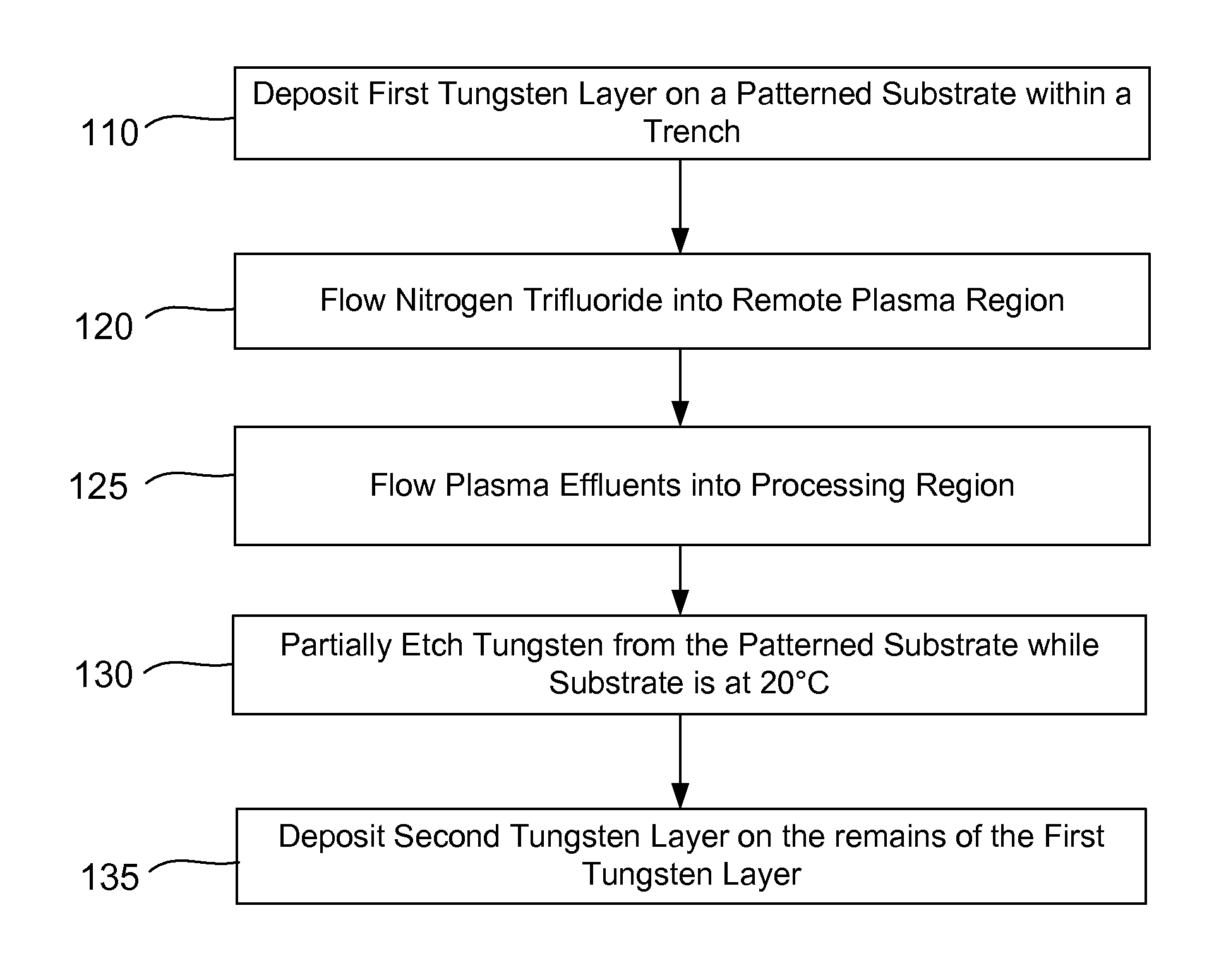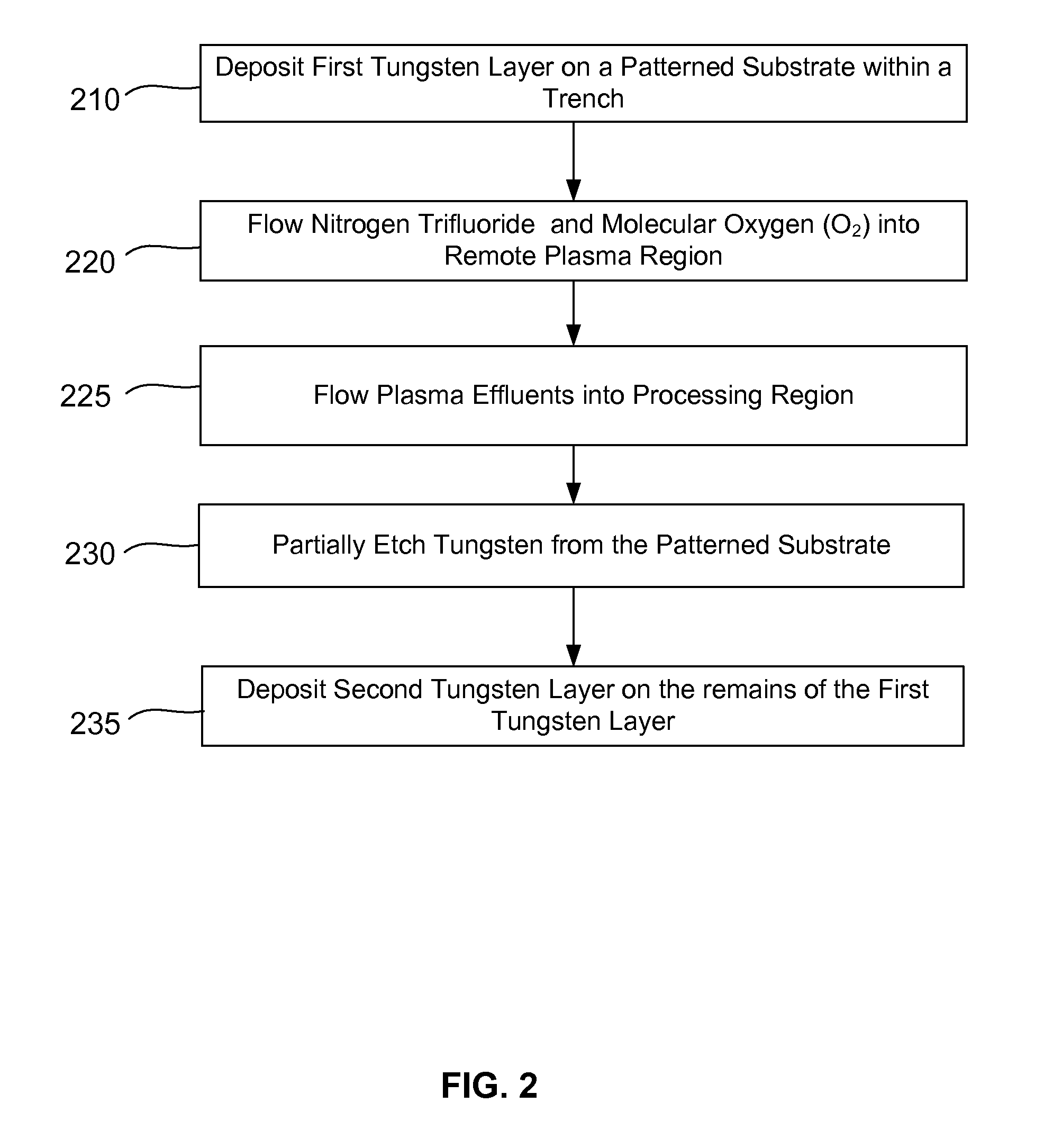Tungsten deposition sequence
a technology of tungsten and deposition sequence, applied in the direction of coating, chemical vapor deposition coating, metallic material coating process, etc., can solve the problems of void or seam, material gap, material gap, structural features on the device having decreased spatial dimensions, etc., to avoid tungsten “poisoning and enhance gapfilling
- Summary
- Abstract
- Description
- Claims
- Application Information
AI Technical Summary
Benefits of technology
Problems solved by technology
Method used
Image
Examples
Embodiment Construction
[0019]Methods of filling gaps with tungsten are described. The methods include a tungsten dep-etch-dep sequence to enhance gapfilling yet avoid difficulty in restarting deposition after the intervening etch. The first tungsten deposition may have a nucleation layer or seeding layer to assist growth of the first tungsten deposition. Restarting deposition with a less-than-conductive nucleation layer would impact function of an integrated circuit, and therefore avoiding tungsten “poisoning” during the etch is desirable. The etching step may be performed using a plasma to excite a halogen-containing precursor while the substrate at relatively low temperature (near room temperature or less). The plasma may be local or remote. Another method may be used in combination or separately and involves the introduction of a source of oxygen into the plasma in combination with the halogen-containing precursor.
[0020]The inventors have found new ways to deposit tungsten into trenches (e.g. contact h...
PUM
| Property | Measurement | Unit |
|---|---|---|
| temperature | aaaaa | aaaaa |
| temperature | aaaaa | aaaaa |
| temperature | aaaaa | aaaaa |
Abstract
Description
Claims
Application Information
 Login to View More
Login to View More - R&D
- Intellectual Property
- Life Sciences
- Materials
- Tech Scout
- Unparalleled Data Quality
- Higher Quality Content
- 60% Fewer Hallucinations
Browse by: Latest US Patents, China's latest patents, Technical Efficacy Thesaurus, Application Domain, Technology Topic, Popular Technical Reports.
© 2025 PatSnap. All rights reserved.Legal|Privacy policy|Modern Slavery Act Transparency Statement|Sitemap|About US| Contact US: help@patsnap.com



